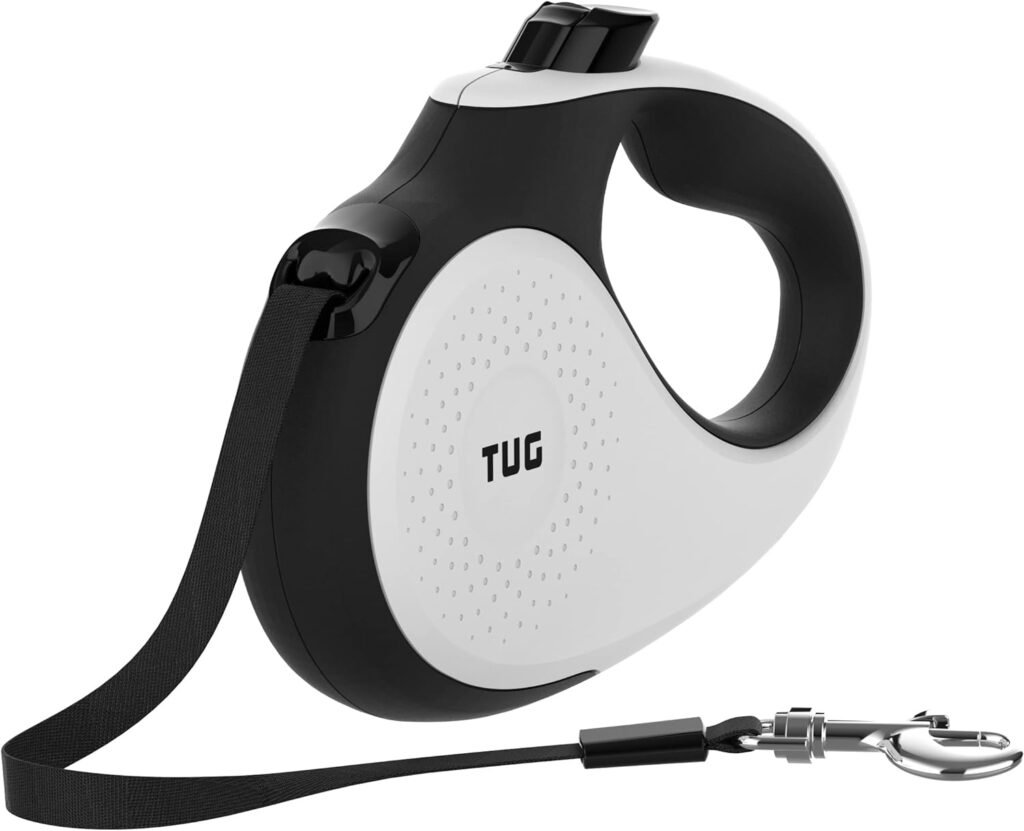
Dogs can experience anxiety and stress just like humans. Understanding their feelings and needs is essential to help them feel safe and secure. By creating a supportive environment, using the right training techniques, and ensuring they receive proper care, we can help our furry friends cope with their challenges and improve their overall well-being.
Key Takeaways
- Recognize the signs of anxiety and stress in dogs, such as excessive barking or hiding.
- Create a safe and comforting space for your dog to relax in.
- Use positive reinforcement and professional training techniques to help your dog feel more secure.
- Regular physical activity can greatly reduce anxiety in dogs.
- Consult with veterinarians or animal behaviorists for professional guidance on managing your dog’s anxiety.
Understanding Anxiety and Stress in Special Needs Dogs
Common Causes of Anxiety in Dogs
Anxiety in dogs can stem from various sources. Some common causes include:
- Separation anxiety when left alone.
- Loud noises like thunderstorms or fireworks.
- Changes in routine or environment.
Signs and Symptoms of Stress in Dogs
Recognizing stress in dogs is crucial for their well-being. Look for these signs:
- Excessive barking or whining.
- Destructive behavior, like chewing furniture.
- Changes in eating habits or grooming.
Differences Between Anxiety and Stress
While often used interchangeably, anxiety and stress are different:
- Anxiety is a long-term condition, often triggered by specific situations.
- Stress is a response to immediate threats or changes in the environment.
Understanding your dog’s emotional state is essential for their happiness and health. Recognizing signs of distress can lead to better support and care.
In summary, being aware of the causes, signs, and differences between anxiety and stress can help you provide better emotional support for your special needs dog. This knowledge is vital for enhancing their quality of life during their golden years, especially when coping with stress and anxiety in aging dogs.
Creating a Safe Environment for Anxious Dogs
Creating a safe space for your dog is essential for their well-being. A designated area in your home can help your dog feel secure when they are anxious. This space should be quiet and free from distractions. Here are some tips to set up a comforting environment:
Setting Up a Comforting Space
- Choose a quiet corner of your home.
- Use soft bedding and familiar toys to make it inviting.
- Ensure the area is away from loud noises and foot traffic.
Using Calming Aids and Tools
- Consider using calming sprays or diffusers with dog-safe essential oils.
- Try anxiety wraps or vests that provide gentle pressure.
- Use soothing music or white noise to mask unsettling sounds.
The Importance of Routine
- Establish a daily schedule for feeding, walks, and playtime.
- Consistency helps your dog know what to expect, reducing anxiety.
- Include quiet time in your routine to allow your dog to relax.
A safe environment can significantly reduce your dog’s anxiety and stress levels.
By making these adjustments, you can help your dog feel more at ease in their surroundings. Remember, environmental modifications are key to creating a safe space for your furry friend.
Training Techniques to Ease Anxiety in Special Needs Dogs
Positive Reinforcement Training
Using positive reinforcement is one of the best ways to train dogs, especially those with anxiety. This method involves rewarding your dog for good behavior, which helps them feel more secure. Here are some key points:
- Use treats or praise when your dog behaves well.
- Be consistent with rewards to build trust.
- Gradually introduce new commands to avoid overwhelming them.
Desensitization and Counter-Conditioning
Desensitization helps dogs get used to things that make them anxious. This technique involves slowly exposing them to their fears in a controlled way. For example:
- Start with a low level of the fear (like a distant sound).
- Gradually increase exposure as your dog becomes more comfortable.
- Pair the exposure with treats to create a positive experience.
The Role of Professional Trainers
Sometimes, it’s best to seek help from a professional trainer. They can provide specialized techniques tailored to your dog’s needs. Consider these benefits:
- Trainers can offer personalized plans.
- They can teach you how to handle specific situations.
- Professional guidance can speed up the training process.
Training your dog takes time and patience. Stay positive and consistent to help your dog feel safe and loved.
By using these techniques, you can help your special needs dog manage their anxiety better and lead a happier life. Remember, every dog is unique, so find what works best for your furry friend!
The Benefits of Physical Activity for Anxious Dogs
Types of Exercises to Reduce Anxiety
Regular physical activity is essential for dogs, especially those dealing with anxiety. Here are some effective exercises:
- Daily walks: A simple yet effective way to help your dog release energy.
- Fetch: This game not only provides exercise but also stimulates your dog’s mind.
- Agility training: Engaging in agility courses can boost confidence and reduce stress.
Incorporating Playtime into Daily Routine
Playtime is crucial for your dog’s mental and emotional well-being. Consider these tips:
- Schedule play sessions: Set aside specific times each day for play.
- Use interactive toys: Toys that challenge your dog can keep them engaged and happy.
- Join a dog park: Socializing with other dogs can help reduce feelings of anxiety.
Outdoor Activities and Their Impact
Spending time outdoors can greatly benefit anxious dogs. Here’s how:
- Nature walks: Being in nature can calm your dog and improve their mood.
- Swimming: Many dogs enjoy water, and swimming is a great low-impact exercise.
- Hiking: Exploring new trails can provide mental stimulation and physical exercise.
Physical activity is vital for your dog’s health. It can improve behavior, social skills, and reduce boredom and anxiety. Consult your veterinarian to determine the best exercise plan for your pet.
In conclusion, incorporating regular physical activity into your dog’s routine can significantly help manage their anxiety. By engaging in various exercises and outdoor activities, you can create a happier and healthier environment for your furry friend.
The Role of Diet and Nutrition in Managing Anxiety
Foods That Help Reduce Anxiety
Certain foods can play a significant role in helping to manage anxiety in dogs. Including the right nutrients in your dog’s diet can make a difference. Here are some foods that are known to help:
- Blueberries: Packed with antioxidants, they can help reduce stress.
- Fish oils: Rich in omega-3 fatty acids, they support brain health.
- Turkey: Contains tryptophan, which can promote relaxation.
Supplements and Natural Remedies
In addition to regular food, some supplements can also aid in reducing anxiety:
- L-theanine: An amino acid that can help calm dogs.
- Valerian root: A natural herb known for its calming effects.
- CBD oil: Gaining popularity for its potential to ease anxiety.
The Importance of a Balanced Diet
A balanced diet is crucial for your dog’s overall health and can impact their mood and behavior. Ensure your dog’s meals include:
- Proteins
- Carbohydrates
- Healthy fats
- Vitamins and minerals
A well-rounded diet not only supports physical health but also contributes to emotional well-being.
By focusing on nutrition, you can help your dog feel more relaxed and secure in their environment. Adjusting their diet may be a simple yet effective way to support their mental health.
Building a Strong Bond with Your Special Needs Dog

Spending Quality Time Together
Building a strong connection with your dog is essential. Spending quality time together can help your dog feel more secure and loved. Here are some ways to do this:
- Take daily walks together.
- Engage in playtime with their favorite toys.
- Practice training exercises to strengthen your bond.
Understanding Your Dog’s Body Language
Dogs communicate through body language. Learning to read these signals can improve your relationship. Look for:
- Tail wagging: A sign of happiness.
- Ears back: May indicate fear or anxiety.
- Relaxed posture: Shows comfort and trust.
The Power of Consistent Interaction
Consistency is key in building trust. Regular interaction helps your dog know what to expect. Here are some tips:
- Establish a daily routine for feeding and walks.
- Use the same commands for training.
- Be patient and understanding during stressful times.
A strong bond with your dog can lead to a happier and healthier life for both of you. Remember, patience and love are the foundations of this relationship.
By focusing on these aspects, you can create a nurturing environment that helps your special needs dog thrive. This connection not only benefits your dog but also enhances your own well-being, as highlighted in the exploration of the remarkable connection between dogs and humans.
Seeking Professional Help for Anxious Dogs
When your dog shows signs of anxiety, it’s important to know when to seek help. Professional guidance can make a significant difference in managing your dog’s stress levels. Here are some key points to consider:
When to Consult a Veterinarian
- If your dog’s anxiety is severe or worsening.
- When home remedies and training techniques don’t seem to help.
- If your dog exhibits destructive behavior or aggression due to anxiety.
Therapies and Medications Available
- Behavioral therapy: This can help modify your dog’s anxious behaviors.
- Medications: Sometimes, vets may prescribe medications to help manage anxiety.
- Natural remedies: Options like calming treats or pheromone diffusers can also be effective.
Working with Animal Behaviorists
- Animal behaviorists can provide specialized training and strategies tailored to your dog’s needs.
- They can help identify specific triggers and develop a plan to address them.
- Consider a consultation if your dog’s anxiety is linked to past trauma or specific situations.
Seeking help early can prevent anxiety from escalating and improve your dog’s quality of life.
In summary, recognizing when to seek professional help is crucial. By consulting with veterinarians and behaviorists, you can find the right approach to support your anxious dog effectively. Remember, you are not alone in this journey; many resources are available to help you and your furry friend.
If your dog is feeling anxious, seeking help from a professional can make a big difference. Don’t wait for things to get worse; visit our website to learn more about how to support your furry friend and find the right resources for their needs. Together, we can help your dog feel calm and happy!
Conclusion
In summary, providing emotional support for dogs dealing with anxiety and stress is crucial for their well-being. By understanding their needs and creating a calm environment, we can help our furry friends feel safe and secure. Engaging in regular exercise, offering distractions, and establishing routines can significantly improve their emotional health. Remember, the bond between a dog and its owner is powerful; by being attentive and caring, we not only support our pets but also strengthen our relationship with them. Ultimately, a happy dog leads to a happier home.
Frequently Asked Questions
What are common signs that a dog may be anxious?
Dogs can show anxiety through behaviors like excessive barking, hiding, chewing on furniture, or pacing. They might also seem restless or overly clingy.
How can I create a calm space for my dog?
To help your dog feel safe, set up a quiet area with comfortable bedding, familiar toys, and soft lighting. You can also use calming scents like lavender.
What types of training can help my anxious dog?
Positive reinforcement training is great for anxious dogs. It involves rewarding good behavior with treats or praise. Desensitization can also help them get used to things that scare them.
How does exercise benefit dogs with anxiety?
Regular exercise helps reduce anxiety in dogs by releasing feel-good hormones. Activities like walks or playtime can make them feel happier and more relaxed.
What should I feed my anxious dog?
A balanced diet is important. Some foods, like those rich in omega-3 fatty acids, can help reduce anxiety. You can also talk to your vet about supplements.
When should I seek professional help for my dog’s anxiety?
If your dog’s anxiety is severe or not improving with home care, it’s time to consult a vet. They can suggest therapies or medications that may help.



